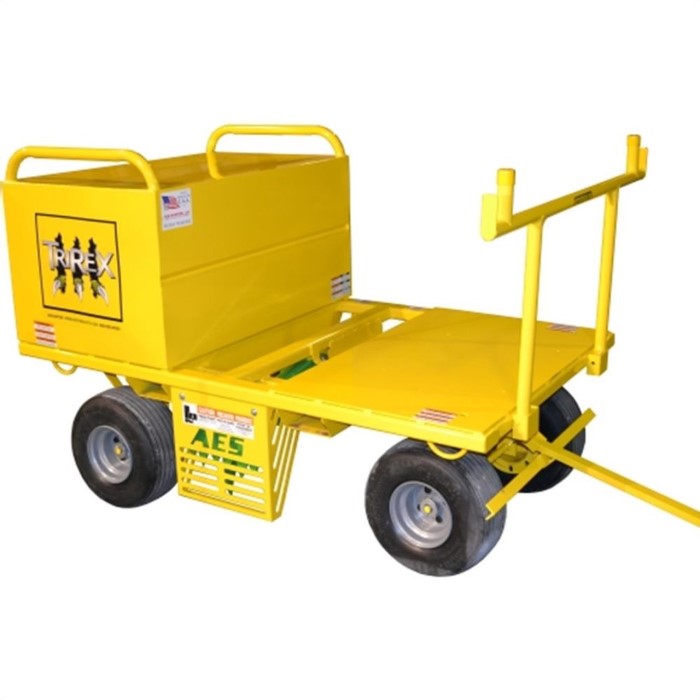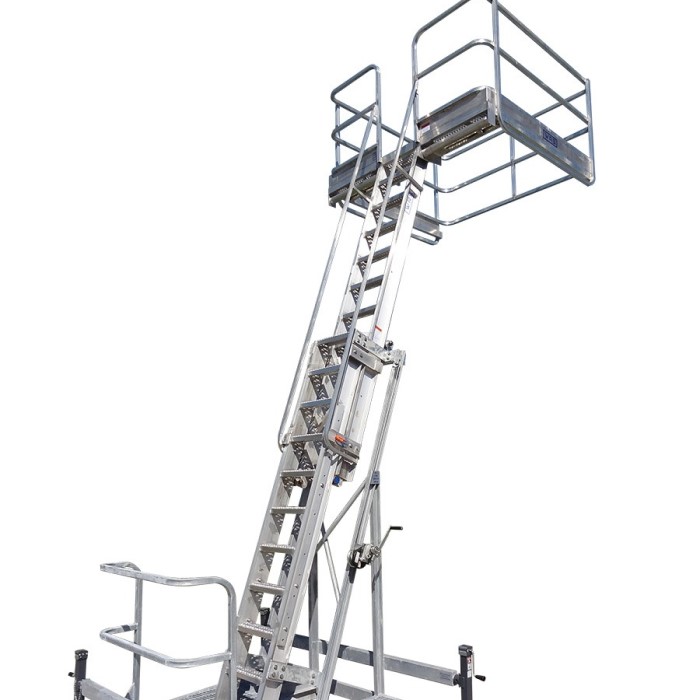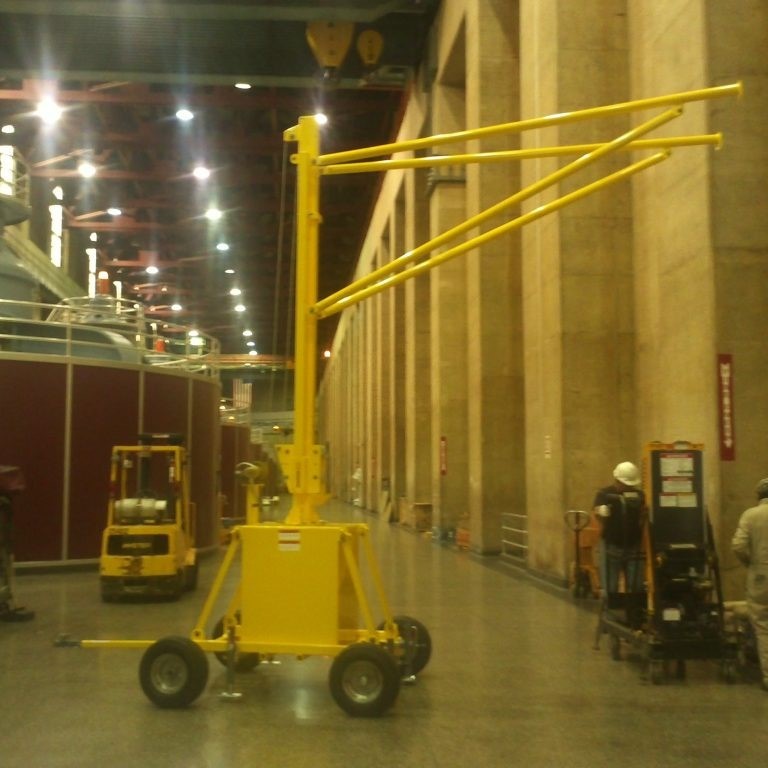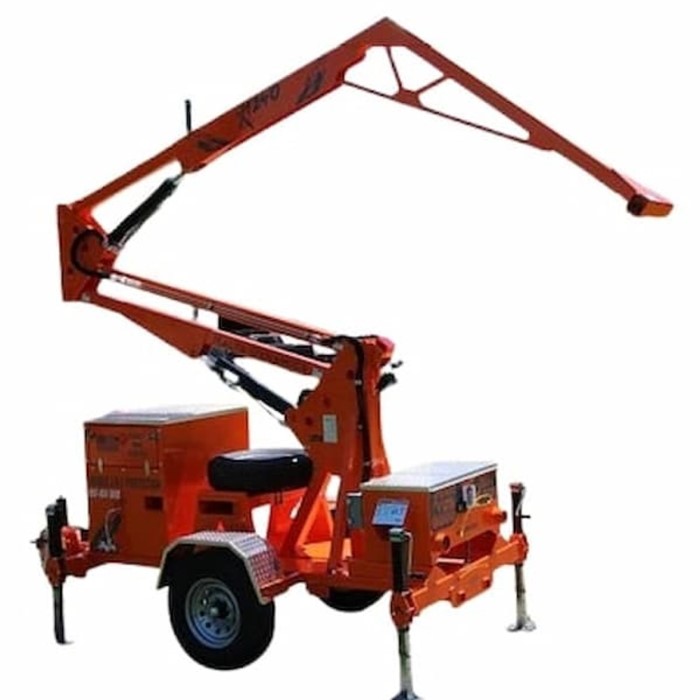What Are Mobile Fall Protection Systems?
Mobile fall protection systems are safety solutions designed for work environments where fixed systems are not practical. These systems provide flexibility and mobility, ensuring worker safety at height across various locations. They are portable, versatile, and essential in industries where tasks frequently change locations.
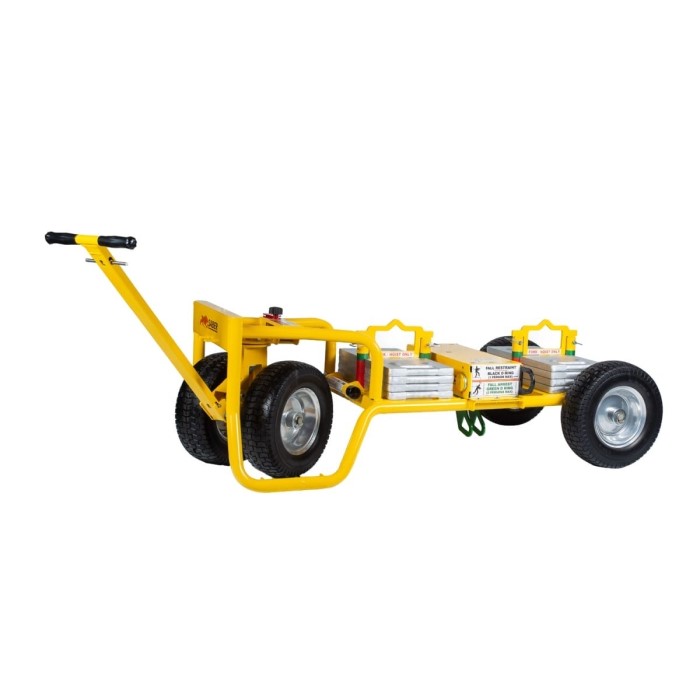
Key Features of Mobile Fall Protection Systems
- Portability: Mobile fall protection systems are easy to transport and set up. This allows workers to establish safety measures in varied environments quickly.
- Flexibility: They adapt to different worksite requirements, making them suitable for numerous industries.
- Durability: Designed with sturdy materials, these systems withstand heavy use and harsh conditions.
- Compatibility: Mobile systems work well with other safety equipment such as harnesses, lanyards, and lifelines.
- Ease of Use: These systems are intuitive, ensuring workers can set them up without extensive training.
How They Differ from Fixed Fall Protection Systems
- Mobility: Mobile systems can be moved and adjusted, while fixed systems remain in one location.
- Installation: Fixed systems require permanent installation, while mobile systems are temporary and ready-to-use.
- Application: Mobile systems suit dynamic worksites, whereas fixed systems are ideal for stable environments.
- Cost: Mobile systems often cost less upfront since they don’t require permanent installation.
- Versatility: They offer broader usability across varied tasks compared to location-specific fixed solutions.
Importance of Fall Protection in Mobile Work Environments
Fall protection is crucial for ensuring worker safety at height in mobile workplaces. Many industries rely on mobile tasks, often in diverse and unpredictable environments. Providing effective protection against falls is necessary to prevent injuries and fatalities. Mobile fall protection systems allow workers to operate safely without compromising productivity.
Common Risks in Mobile Work Sites
Mobile work sites come with unique risks that make fall protection essential:
- Uneven or Unstable Surfaces: Workers often perform tasks on ladders, scaffolds, or elevated platforms.
- Changing Workspaces: Portable jobsites introduce variability that increases safety challenges.
- Environmental Factors: Adverse weather, such as strong winds or rain, can jeopardize stability.
- Limited Safety Infrastructure: Mobile worksites lack permanent safety equipment, heightening the need for mobile solutions.
- Human Error: Workers are at risk due to accidental slips or improper use of equipment.
Identifying these risks allows employers to choose suitable mobile fall protection systems for their team.
Legal and Safety Standards for Fall Protection
Compliance with regulations ensures worker safety and avoids legal penalties. Key standards include:
- OSHA Regulations: The Occupational Safety and Health Administration sets federal standards for worker safety.
- OSHA requires employers to provide fall protection for heights above certain limits.
- ANSI Standards: The American National Standards Institute provides guidelines on equipment performance.
- ANSI standards ensure the reliability of safety equipment like harnesses and lanyards.
- State Regulations: Some states enforce stricter rules specific to industries and work contexts.
- Worksite Audits: Regular inspections verify compliance and maintain safety. Non-compliance can lead to fines.
Adhering to these legal and safety standards is vital for fostering a safe mobile work environment. Protecting workers against fall risks not only saves lives but also upholds a company’s commitment to safety.
Types of Mobile Fall Protection Systems
Mobile fall protection systems come in various types to suit specific worksite needs. Each type offers unique benefits and is designed to address distinct safety challenges. Choosing the right system depends on the nature of the work and the environment where it’s performed.
Anchor-Based Mobile Solutions
Anchor-based mobile solutions provide secure attachment points for personal fall protection equipment. These systems are highly portable and can be moved to different locations as needed.
- Functionality: Workers use anchors to connect harnesses, lanyards, or lifelines for safe operation.
- Common Uses: Ideal for roofing, bridge inspections, and tower work.
- Advantages: Easy installation and ensures flexibility in various work settings.
- Examples: Freestanding anchors, counterweight anchorage systems, and mobile anchor points.
Rail Systems and Trolleys
Rail systems and trolleys are designed for tasks requiring movement along horizontal or vertical surfaces. They offer greater stability compared to other systems.
- Functionality: Workers attach to a track or rail that allows controlled movement.
- Common Uses: Perfect for overhead crane maintenance, aircraft servicing, and warehouse tasks.
- Advantages: Prevent risks from falls while supporting seamless mobility during work.
- Examples: Ceiling-mounted rails, floor-mounted tracks, and portable trolley systems.
Temporary and Portable Guardrails
Temporary and portable guardrails create a protective barrier around elevated workspaces. These systems are quick to set up and remove.
- Functionality: Guardrails eliminate fall risks by enclosing the hazardous edges of elevated areas.
- Common Uses: Frequently used in scaffolding work, construction sites, and temporary platforms.
- Advantages: Lightweight and adaptable to various worksites.
- Examples: Modular guardrails, freestanding guardrails, and adjustable edge protection systems.
Understanding these types helps in selecting effective mobile fall protection systems. Matching the right solution to the nature of the task ensures worker safety and compliance.
Components
Mobile fall protection systems consist of several crucial components that ensure safety at height. Each part plays a unique role in protecting workers during operations. Understanding these components is key to choosing and using the right system effectively.
Harnesses and Lanyards
Harnesses and lanyards are essential elements in any mobile fall protection system.
- Function: Harnesses secure workers to the system, distributing force during a fall to reduce injury.
- Lanyards: Lanyards connect the harness to an anchor point, providing a link to the system.
Key Features:
- Adjustability: Workers can customize harnesses for a snug and secure fit.
- Comfort: Padded harnesses reduce strain during long work hours.
- Variety: Different types of lanyards exist, such as shock-absorbing or rope lanyards, catering to specific uses.
These tools are indispensable for proper fall protection.
Anchor Points and Their Mobility
Anchor points serve as the foundation of mobile fall protection systems.
- Role: They provide secure attachment spots for lifelines, harnesses, or lanyards.
- Portable Designs: Mobile anchor points can be adjusted or relocated to different worksites.
Examples of Mobile Anchors:
- Freestanding Anchors: Used where permanent attachments are unavailable.
- Weight-Based Systems: Rely on counterweights to stay firmly in place.
- Clamp-on Anchors: Attach directly to structures like beams or railings.
Choosing the right anchor increases system safety and adaptability.
Self-Retracting Lifelines
Self-retracting lifelines (SRLs) are another key component of these systems.
- Main Function: SRLs extend and retract automatically, maintaining tension to prevent slack and reduce fall risks.
- Emergency Use: They lock instantly during a fall, minimizing free-fall distance and impact.
Benefits of SRLs:
- Ease of Movement: Workers retain mobility while staying tethered.
- Durable Design: Made with high-strength materials to withstand tough conditions.
- Versatility: Available in varying lengths and configurations for different job sites.
Each of these components contributes significantly to the overall effectiveness of mobile fall protection systems. Selecting high-quality and compatible parts ensures better worker safety and compliance with regulations.
Key Industries
Mobile fall protection systems are essential across a range of industries. These industries often require work at height or in areas with high fall risks. By using such systems, they ensure worker safety and meet regulatory standards.
Construction and Building Maintenance
The construction sector heavily relies on mobile fall protection systems. Tasks like roofing, scaffolding, and facade maintenance pose serious fall risks. These systems offer versatile solutions for dynamic job sites.
- Use Cases: Workers on ladders, scaffolds, or unfinished structures.
- Benefits: Enhanced mobility, quick setup, and compliance with safety regulations.
- Examples: Anchor systems, temporary guardrails, and self-retracting lifelines.
Transportation and Vehicle Maintenance
Transportation-related industries also involve elevated workspaces. Workers often climb on vehicles, machinery, or aircraft during inspection or servicing. Mobile fall protection keeps them safe in these environments.
- Use Cases: Bus, truck, or airplane cleaning and maintenance.
- Benefits: Prevents accidents during routine vehicle checks and repairs.
- Examples: Portable guardrails, mobile anchors, and trolley systems.
Warehousing and Manufacturing
Warehousing and manufacturing facilities also require mobile fall protection systems. Elevated platforms, conveyor systems, and loading docks create potential hazards.
- Use Cases: Workers managing high shelving or inspecting production equipment.
- Benefits: Ensures compliance and avoids injuries during logistics and production tasks.
- Examples: Freestanding anchors, rail systems, and adjustable guardrails.
Understanding the unique requirements of these industries helps in selecting the right solutions. Tailored mobile fall protection systems not only save lives but also improve efficiency across job sites.
Benefits of Using
Mobile fall protection systems offer a range of advantages for industries requiring flexible safety solutions. These benefits improve workplace safety, lower expenses, and boost overall efficiency.
Flexibility and Portability
Flexibility and portability are the core strengths of mobile fall protection systems:
- Easy Relocation: Workers can move these systems between worksites as tasks require.
- Quick Setup: Portable designs make them convenient and easy to install in dynamic environments.
- Adaptability: They work in different industries and on varied surfaces, including rooftops and industrial plants.
These features allow workers to maintain safety standards in ever-changing conditions.
Cost-Effective Safety Solutions
Mobile fall protection systems are a budget-friendly solution for organizations. Here’s how:
- Lower Initial Investment: No need for costly permanent installations.
- Reduced Downtime: Quick setup minimizes work delays, boosting productivity.
- Multi-Purpose Use: A single system can suit diverse tasks, reducing the need for multiple setups.
These cost benefits ensure companies can prioritize safety without overspending.
Enhancing Worker Productivity
Safety and productivity often go hand-in-hand. Mobile fall protection systems positively impact worker efficiency by:
- Boosting Confidence: Workers perform better knowing they are protected from fall risks.
- Enabling Mobility: Systems like trolleys and self-retracting lifelines allow for seamless movement.
- Reducing Downtime: Reliable designs prevent accidents, ensuring workflow continuity.
These advantages make them a vital addition to safety practices, improving both morale and output.
In summary, mobile fall protection systems are a practical investment. They combine adaptability, cost efficiency, and enhanced worker performance, ensuring safer and more productive workplaces.
How to Choose the Right Mobile Fall Protection System
Selecting the right mobile fall protection system is key to ensuring worker safety and efficiency. By evaluating specific needs, you can pick a system that best suits your work environment.
Assessing Your Work Environment
Understanding the work environment is the first step to choosing a suitable mobile fall protection system.
- Identify Job Hazards: Analyze the tasks and areas where workers are exposed to fall risks.
- Surface Conditions: Determine whether the work involves uneven, slippery, or unstable surfaces.
- Height Requirements: Assess the average height at which tasks are performed to choose the right system.
- Movement Needs: Consider whether workers need static safety or mobility along the work area.
- Weather Factors: Account for environmental conditions like wind, rain, or extreme heat.
A thorough assessment ensures the chosen system matches the specific challenges of the site.
Evaluating System Durability and Compliance
Durability and compliance are essential for system reliability and legal adherence.
- Material Strength: Select systems made of durable materials that can withstand heavy use and harsh conditions.
- Weight Limits: Check the load capacity to ensure it meets jobsite requirements.
- Regulatory Compliance: Confirm adherence to OSHA and ANSI standards for fall protection.
- Inspection Records: Choose systems with documented maintenance and inspection histories for guaranteed safety.
- Compatibility: Ensure the system integrates well with your existing safety equipment, such as harnesses and lanyards.
A compliant and robust system reduces safety risks and ensures legal conformity.
Considering Worker Training for Proper Use
Proper training is critical for maximizing the effectiveness of mobile fall protection systems.
- Ease of Use: Choose systems that are intuitive to set up and operate.
- Training Programs: Provide workers with hands-on training to familiarize them with the system.
- Emergency Procedures: Train workers on how to respond in case of a fall or system failure.
- Regular Updates: Conduct periodic refresher courses to ensure ongoing competence.
- System Documentation: Make user manuals accessible for reference during training and operations.
Well-trained workers improve safety and make the most of the system’s capabilities.
By assessing the environment, verifying durability, and prioritizing training, you can select a mobile fall protection system that meets both safety and operational goals.
Maintenance and Inspection
Proper maintenance and regular inspection are crucial for the effectiveness and safety of mobile fall protection systems. These practices help in identifying wear, damage, or malfunctions early, ensuring the system remains reliable.
Routine Inspection Guidelines
Routine inspections ensure mobile fall protection systems are safe and functional at all times. Follow these guidelines:
- Check for Visible Damage: Inspect harnesses, lanyards, and lifelines for tears, frays, or signs of wear.
- Examine Anchor Points: Verify the stability and structural integrity of anchors before use.
- Test Moving Components: For systems with trolleys or rails, confirm smooth and controlled movement.
- Inspect Connectors: Ensure snap hooks, carabiners, and buckles work properly and lock securely.
- Review Labels and Tags: Verify that inspection dates are up-to-date and certifications intact.
- Follow Manufacturer Instructions: Refer to the manual for specific inspection protocols.
- Document Findings: Keep a log of inspections to track wear and schedule replacements.
Routine checks reduce the risk of system failure during work, keeping workers safe.
Maintaining Longevity and Effectiveness
Proper maintenance practices extend the lifespan and efficiency of mobile fall protection systems. Consider the following tips:
- Clean After Use: Wipe down components to remove dirt, grease, or chemicals.
- Avoid Harsh Conditions: Store equipment in a dry place away from direct sunlight and corrosive substances.
- Lubricate Moving Parts: For trolleys and self-retracting lifelines, use approved lubricants sparingly.
- Replace Worn Parts: Swap out damaged harnesses, lanyards, and anchors immediately.
- Regular Professional Inspections: Schedule periodic checks by certified safety professionals.
- Calibrate Locking Mechanisms: Ensure self-retracting lifelines and locking systems work efficiently.
- Train Staff: Educate workers on proper usage and care to minimize abuse of the equipment.
By following these maintenance steps, you ensure the safety, compliance, and durability of mobile fall protection systems. Always prioritize frequent evaluations to keep the equipment performing optimally.
Conclusion
In conclusion, investing in a mobile fall protection system is a decision that profoundly impacts workplace safety. These systems offer flexibility and a high level of protection for workers operating at heights. By understanding their features, benefits, and how to choose and implement them, employers can create safer work environments. Additionally, a culture of safety not only protects employees but also enhances overall productivity. Therefore, prioritize safety and ensure that your worksite is equipped with the best mobile fall protection system available. The investment pays off in keeping workers safe and maintaining compliance with safety regulations.
